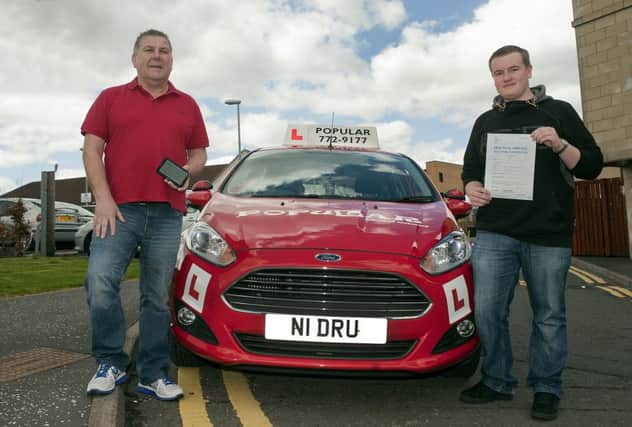Better driver training will deliver safer roads


There are few jobs where a slight lapse of concentration can lead to a loss of life or serious injury.
In logistics and transport, slight errors of judgement when driving large vehicles can have severe consequences as we sadly see most days on the roads.
Advertisement
Hide AdAdvertisement
Hide AdCILT has been stepping up its efforts to ensure that, in the boardrooms of transport and logistics operators across the country, there is recognition that safety should be top of the agenda. All companies have a moral, economic, and legal obligation to manage road risk, particularly with regard to vulnerable road users. The costs of complacency are high. In addition to the human consequences of death and injury, drivers lose confidence, and firms lose time and money.
CILT has produced video resources (http://www.ciltuk.org.uk/News/CILTMedia.aspx) to help managers understand how to achieve continuous improvement through driver training and monitoring of vehicles and safety standards.
If all road users treat others with respect then we can make the roads safer. To achieve this, a greater focus on enabling safer behaviour would complement the current investment in encouraging safer behaviour. Many measures help with this.
Well-designed roads with clear uncluttered and unambiguous signs and road markings with well-maintained surfaces help road users to share limited space efficiently and safely. Although these principles are clearly set out in the Scottish Government’s helpful guidance on designing streets, and sometimes applied to new roads, there is currently no programme to apply these principles across the existing road network.
There are many good training programmes for drivers and cyclists which need to be better promoted as CILT is doing through its road safety and cycling forums. More needs to be achieved training pedestrians. Although generations of road safety plans have recognised this need, pedestrians often seem to be oblivious to the dangers presented by large vehicles.
The laws governing insurance to use the roads do not currently encourage mutual respect. On 7 May Lord McEwan ruled in the Court of Session on the case of a ten-year-old boy hit by a bus in 2008. The reputational damage to the transport industry caused by a seven-year wait to compensate the boy for his injuries will be far greater than the £8,000 in damages. Much worse is the very expensive court proceedings over many years, the costs of which are reflected in bus insurance premiums.
Anything that undermines confidence in the bus, or freight, industries must be tackled. A seven-year court case to resolve an £8,000 claim is damaging for everyone involved. Lord Taylor’s recent review observed that there is not a compensation culture in Scotland but there is growing pressure on lawyers to seek damages from their clients which in turn pushes up motor insurance premiums. Lord MacEwan ruled that a crowd of kids, even by their own description in the trial “mucking about” at a bus stop, were entitled not to be struck by a bus.
These are not unusual incidents. Better training of bus drivers is a common goal but protecting everyone if things go wrong is important too.
Advertisement
Hide AdAdvertisement
Hide AdTherefore, many in our industry have supported Scotland’s Roadshare campaign which is promoting a change in the law to keep more simple cases like this out of court. By requiring insurance companies to indemnify uninsured vulnerable road users for injuries sustained in accidents with large vehicles like cars, lorries and buses, the reputation of the transport industry for caring about its customers could be protected, rather than subjugated to legal and insurance processes.
Research by the RAC foundation Road Sharing: Does it Matter what Road Users think of each Other? showed that pedestrians feel increasingly vulnerable, drivers think cyclists are aggressive and cyclists think it is like a war our on the roads. Most importantly, all of the research shows that the pressures on the system are likely to increase these tensions.
The challenge to improve road safety is for us all, not just a few professionals. Transport operators, designers, legislators, insurers and the public can all work together to avoid conflict, particularly for the most vulnerable who are least able to protect themselves. There is no silver bullet, but it is time for everyone to step up to the challenge of delivering better roadsharing. CILT Scotland is would welcome suggestions from as many people as possible about how to deliver the changes needed.
• Derek Halden is immediate past chair of CILT Scotland ciltscotland.com http://www.ciltuk.org.uk/ContactUs.aspx
SEE ALSO